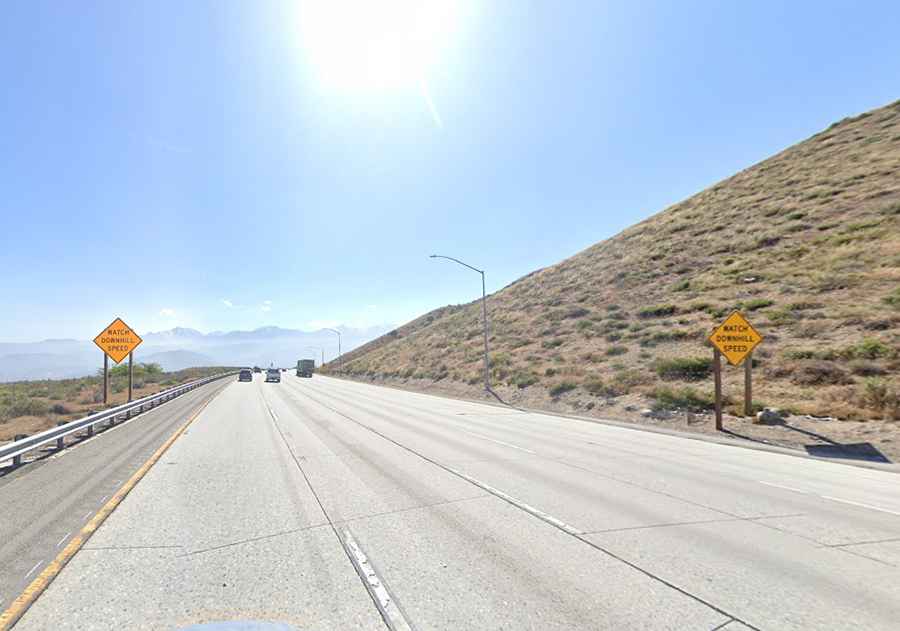Driving the steep road to Cajon Summit in California
Cajon Summit is a mountain pass at an elevation of 1.301m (4,268ft) above sea level, located in the County of San Bernardino, in the US state of California. It is a critical transportation route that connects the high desert region with the Inland Empire and the Los Angeles Basin.

When was the road through Cajon Summit in California built?
Tucked away in the southern part of California, in Spanish, the word cajon means "box". The pass has been an important route since the 19th century, and it has always been an important gateway to southern California. It was used by early settlers and pioneers traveling westward. The first road through the pass was built in the 1880s. It has been paved with macadam since 1916. The road was widened further to 20 ft with 5 ft. shoulders, eliminating curves (1932 - 34). In the modern era, it has been the site of significant transportation infrastructure, including the development of highways and railroads.
How long is Cajon Summit in California?
The road to the summit is fully paved. It’s called Interstate 15 (I-15) and links the Los Angeles area ports to the Midwest and eastern US. The road through the pass is about 96km (60 miles) long, running south-north from San Bernardino to Barstow. It serves as a major corridor between the high desert areas of Southern California and the more populous areas to the west.
How steep is Cajon Summit in California?
Its steepest grade is 6 % for 4 miles. Using a low gear, it is extremely important to conserve the truck's brakes. Speed limit is 70 mph (45 mph for trucks). The pass can be challenging for drivers due to steep grades and potentially hazardous weather conditions.
Is Cajon Summit in California open in winter?
Located between the San Bernardino Mountains to the north and the San Gabriel Mountains to the south, the area is known for high wind, turbulence and fog. The weather over the pass can vary, from foggy days with poor visibility to clear afternoons. The road occasionally gets snow, which can sometimes be enough to close the pass temporarily.